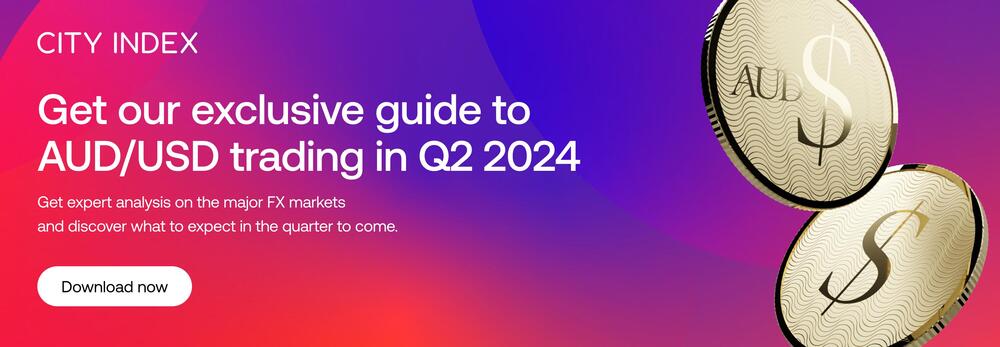
The US dollar and British pound were the strongest forex majors on Wednesday following thanks to not-so-dovish FOMC minutes, hot UK inflation figures and a snap UK election. The minutes revealed disappointment from Fed members that inflation had not slowed as quickly as expected, which echoed recent comments from members after the meeting and backed up the ‘higher-for-longer’ narrative for the Fed’s interest rates.

The US dollar was hinting at breakouts ahead of the European open, which eventually saw USD/CHF lead the way with a break above 0.9120 to reach my 0.9150/65 target zone, DXY stop just shy of the 105 target, EUR/USD break trend support and AUD/USD confirm a head and shoulders top on the 4-hour chart.
Hot UK inflation figures have poured cold water on hopes of a BOE cut in June. Core CPI only slowed to 3.9%, compared with 4.2% prior and 3.6% expected and rose 0.9% m/m versus 0.6% prior and 0.7% expected. GBP/USD initially rallied in line with my bias, but as outlined in yesterday’s CPI preview, I suspect upside potential for the British pound could be limited from here.
Gold prices were quick to buckle under US dollar strength, sending spot prices below $2400 during its worst day in three weeks and the equally-weighted gold basket to a 3-day lower, after it failed to retest its record high set in April. A move we warned of earlier this week.
The RBNZ surprised traders in Wednesday’s Asian session by revealing the had discussed the potential to raise interest rates at yesterday’s meeting, initially sending NZD/USD 1% higher and the Kiwi dollar rose against all FX majors. Ultimately decided to hold their cash rate at 5.5%, and markets were clearly positioned for a slightly dovish tine – not the hawkish undertone delivered.
Volatility struck Nvidia shares during after-hour trade after earing beat expectations and the company announced a 10:1 stock split. The Nasdaq 100 futures predictably mimicked the move but with less volatility, printing a fresh record high before pulling back near the day’s open price.
Economic events (times in AEST)
Flash PMIs are the key theme for today, and whilst the reports from Australian and Japan tend not to be big market movers for their respective currencies, they can sometimes provide a lead on what to expect in the European and US sessions is incoming data is one-sided. But what traders would prefer to see is a divergence between regions. And with the US dollar regaining its footing, a weak set of PMIs from Europe coupled with stronger-than-expected PMIs from the US could bode well for the USD dollar and to towards 105.20.

- 08:45 – New Zealand retail sales
- 09:00 – Australian flash PMIs (manufacturing, services)
- 09:50 – Japan foreigner purchases of stocks/bonds
- 10:30 – Japan’s flash PMIs (manufacturing, services)
- 17:15 – French flash PMIs (manufacturing, services)
- 17:30 – Germany flash PMIs (manufacturing, services)
- 18:00 – Euro Area flash PMIs (manufacturing, services)
- 18:30 – UK flash PMIs flash PMIs (manufacturing, services)
- 22:30 – US jobless claims
- 23:45 – US flash PMIs (manufacturing, services)
AUD/USD technical analysis:
The Australian dollar has played relatively well with my near-term outlooks this past week or so. We saw the breakout to a YTD high, even if it was short lived. Ultimately AUD/USD succumbed to USD strength on Wednesday to break back beneath 0.6650 and shows the potential to head towards the 06580 support zone, although there’s several technical levels nearby that could prompt a bounce first.
Wednesday’s low formed at a high-volume node (HVN) and weekly S1 pivot, just above the 66c handle. The 1-hour RSI also reached its most oversold level since May 1st. Therefore AUD/USD may be one for bears to consider fading into rallies, perhaps around Wednesday’s low or the daily pivot around a 38.2% Fibonacci level.

View the full economic calendar
-- Written by Matt Simpson
Follow Matt on Twitter @cLeverEdge
How to trade with City Index
You can trade with City Index by following these four easy steps:
-
Open an account, or log in if you’re already a customer
• Open an account in the UK
• Open an account in Australia
• Open an account in Singapore
- Search for the market you want to trade in our award-winning platform
- Choose your position and size, and your stop and limit levels
- Place the trade











